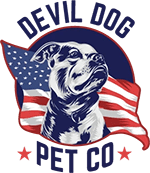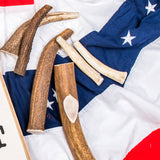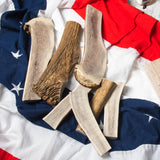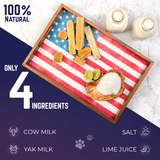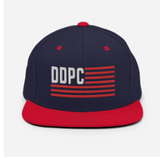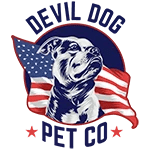What Are Yak Bones and Why Every Leader Should Care
Forget flimsy toys and rawhide rejects-yak bones (properly called Himalayan yak cheese chews) are the unsung heroes of real canine enrichment. Why? Because real leaders choose tools that outlast, out-perform, and keep their pack out of trouble.
Key Takeaways
- Yak bones, also known as Himalayan yak cheese chews, are durable and long-lasting dog chews.
- They provide real enrichment for dogs compared to flimsy toys and rawhide alternatives.
- Yak bones help keep dogs engaged and out of trouble.
- Choosing yak bones reflects a leader's commitment to quality and effective dog care tools.
Table of Contents
- What Are Yak Bones and Why Every Leader Should Care
- What Are Yak Bones? Separating Fact from Fiction
- The Ancient Process Behind Modern Yak Bones
- Extreme Dog Leadership: Why Yak Cheese Chews Dominate
- Why Yak Bones Are a Nutritional Gamechanger
- Choosing the Right Yak Bone for Your Dog
- Safe Use, Storage, and Leadership Protocols
- Devil Dog Pet Co. Recommendation and Leadership Commitment
As a Marine Corps veteran who's seen what happens when discipline breaks down, I'll tell you this: your dog's chew selection isn't just about keeping them busy. It's about taking extreme ownership of their physical health, mental stimulation, and behavioral development. When our dog Dexter needed something tougher than store-bought garbage, we discovered these ancient Himalayan treasures-and they changed everything.
Here's what you'll master in this complete guide: the true definition of yak bones versus marketing myths, traditional origins that span centuries, nutritional powerhouse benefits, safety protocols that protect your pack, and Devil Dog Pet Co.'s veteran-rooted stance on why these yaks milk dog chews dominate the competition.
What Are Yak Bones? Separating Fact from Fiction

Let's clear the air immediately: when American dog owners talk about yak bones, they're referring to Himalayan yak cheese chews-not actual skeletal remains. These dense, horn-like treats are crafted from yak and cow milk using traditional methods that date back centuries in Nepal and Tibet.
Physical Properties That Set Them Apart
Authentic yak cheese chews display a pale yellow color with semi-translucent qualities. They're rock-hard when dry but gradually soften as your dog's saliva works the surface. The texture resembles compressed horn more than typical cheese-dense, uniform, and built to withstand serious chewing sessions.
These aren't your average pet store impulse buy. A properly crafted yak chew feels substantial in your hand, shows slight oil sheen without greasiness, and carries a faint smoky scent from traditional drying methods.
Traditional Origins: From Human Food to Canine Gold
The original product, called "churpi" in Nepal and Tibet, served as portable protein for high-altitude herders and their working dogs. Himalayan families would press fresh yak milk into dense blocks, smoke them over yak dung fires, then sun-dry the results for months.
This wasn't pet food manufacturing-it was survival nutrition. The same qualities that kept mountain families fed during harsh winters (long shelf life, concentrated nutrients, slow consumption) make these chews perfect for modern dogs.
Cultural Note: While actual yak bones serve ceremonial and crafting purposes in Tibetan Buddhism, food-grade yak cheese chews are what responsible dog owners should seek. Never confuse jewelry-making materials with digestible treats.
The Ancient Process Behind Modern Yak Bones
Understanding how authentic yaks milk dog chews are crafted helps you identify quality products and avoid cheap imitations flooding the American market.
The Four-Step Traditional Process
Genuine yak cheese chews follow the same basic process used for centuries:
- Milk Collection: Fresh yak and cow milk (yaks produce limited milk, so cow milk extends supply)
- Curd Formation: Lime juice and salt separate curds from whey
- Pressing and Smoking: Curds are compressed into dense blocks, then smoked over traditional fires
- Sun Drying: Blocks cure in high-altitude sun and wind for weeks, creating the characteristic hardness
This process removes virtually all lactose while concentrating proteins, minerals, and flavor. No rawhide chemicals, no artificial hardeners, no grain fillers-just milk, salt, lime, smoke, and time.
The result is a chew that's technically cheese but functions like the toughest natural bone-dense enough to challenge power chewers while remaining fully digestible when consumed in appropriate pieces.
Extreme Dog Leadership: Why Yak Cheese Chews Dominate

As leaders, we don't just hand our dogs random treats and hope for the best. We analyze, compare, and choose tools that deliver results. When it comes to yak bones versus other popular chews, the data speaks for itself.
Accountability First: What Goes In Matters
Every chew you offer becomes part of your dog's daily nutrition, dental health, and behavioral conditioning. Responsible leaders obsess over these details because shortcuts lead to vet bills, behavioral problems, and disappointed dogs.
At Devil Dog Pet Co., we apply Marine Corps standards to chew selection: if it doesn't meet our criteria for safety, longevity, and nutritional value, it doesn't make the cut. That's why yaks milk dog chews earned their place in our arsenal.
The Complete Chew Comparison: Data-Driven Leadership
Here's how yak cheese chews stack up against the competition across the metrics that matter most to responsible dog owners:
| Feature | Yak Chew (Bone) | Elk Antlers | Bully Sticks | Rawhide |
|---|---|---|---|---|
| Longevity | Days to weeks | Weeks to months | Minutes to hours | Hours |
| Digestibility | Fully edible | Inert/minimal | Fully edible | Not digestible |
| Odor Level | Virtually none | None | Moderate | Moderate to high |
| Mess Factor | Minimal crumbs | Light dust | Moderate staining | High mess |
| Puppy Safe | Yes (8+ weeks) | No (adults only) | Yes (supervised) | No |
| Senior Safe | Yes (can soften) | Depends on teeth | Yes | No |
| Nutritional Value | High protein, minerals | Minimal nutrients | High protein | Minimal |
| Chemical Processing | None | None | Minimal | Heavy chemicals |
| Choking Risk | Low (with sizing) | Low (with sizing) | Moderate (end pieces) | High |
| Cost Per Hour | Moderate | Low | High | Moderate |
| Verdict | Best overall balance | Maximum durability | High palatability | Avoid completely |
Why Yak Chews Win the Leadership Test
The comparison reveals why experienced dog owners gravitate toward yak cheese chews: they deliver the sweet spot between safety, nutrition, and engagement that busy leaders need.
Unlike antlers, which can be too hard for developing or aging teeth, yak chews soften gradually as dogs work them. Unlike bully sticks, which disappear quickly and create odor issues, yak chews provide sustained engagement without the barnyard smell. And unlike rawhide-which responsible owners avoid entirely-yak chews digest completely when consumed in appropriate pieces.
Marine Corps Perspective: The best tool is the one you can deploy consistently without compromise. Yak chews deliver reliable performance across the widest range of dogs, ages, and situations.
Why Yak Bones Are a Nutritional Gamechanger
When you hand your dog a yak cheese chew, you're not just buying them time-you're delivering concentrated nutrition that supports their health from teeth to tail.
Protein and Mineral Density That Matters
Authentic yaks milk dog chews pack approximately 60-70% protein by weight, making them among the most protein-dense treats available to American dog owners. This isn't empty calories-it's bioavailable nutrition that supports muscle development, coat health, and energy production.
The mineral profile reads like a canine multivitamin: calcium and phosphorus for bone strength, zinc for immune function, and trace minerals that support everything from wound healing to cognitive function. The traditional smoking and drying process concentrates these nutrients while removing excess moisture and lactose.
Dental and Mental Health: The Hidden Benefits
The hard surface of yak cheese chews functions like nature's toothbrush, scraping plaque and tartar as dogs gnaw. The mechanical action exercises jaw muscles while the extended chewing time promotes healthy saliva production-your dog's natural defense against oral bacteria.
But the mental health benefits might be even more significant. The sustained chewing required to work down a yak chew triggers endorphin release, creating a natural calming effect. This makes them invaluable tools for managing anxiety, boredom, and destructive behaviors.
Pros
- High protein density supports muscle and coat health
- Natural plaque removal through mechanical scraping
- Endorphin release promotes calm, focused behavior
- Virtually lactose-free after traditional processing
- No artificial preservatives or chemical hardeners
- Sustainable sourcing supports Himalayan communities
Cons
- Too hard for puppies under 8 weeks or seniors with worn teeth
- Rich protein content may cause loose stools initially
- Requires proper sizing to prevent gulping large pieces
- Higher upfront cost than mass-produced alternatives
Safety First: Protocols Every Leader Must Know
Yak cheese chews earn their reputation as one of the safest long-lasting chews available, but that safety depends entirely on proper implementation. As leaders, we don't rely on luck-we follow protocols.
Size selection trumps everything else. Choose a chew longer than your dog's muzzle and thick enough that it cannot fit between their back molars. This prevents gulping and ensures the gradual consumption that makes yak chews digestible.
Supervision remains non-negotiable, especially during introduction. Watch for proper chewing technique-steady gnawing rather than aggressive biting. Remove the chew when it becomes small enough to swallow whole or shows signs of splintering.
Pro Tip: When the yak chew becomes too small to safely continue, don't waste it. Soak the remaining piece in water for 5 minutes, microwave for 45-90 seconds until it puffs, then let it cool completely. You've just created a safe, crunchy treat from what would have been waste.
Choosing the Right Yak Bone for Your Dog

Selection isn't guesswork-it's tactical planning. The wrong size yak chew becomes a choking hazard or a waste of money. The right size transforms into weeks of productive engagement and dental health.
Size It Like a Marine: Precision Matters
Every successful mission starts with proper equipment sizing. Yak cheese chews follow the same principle: bigger is safer, and safety enables success.
Choose a yak bones chew that extends beyond your dog's muzzle length and cannot fit between their back molars. This prevents gulping while ensuring the gradual consumption that makes these chews digestible. A 40-pound moderate chewer needs a Medium or Large; aggressive chewers should size up to Large or XL regardless of body weight.
- Small (0-15 lbs): Toy breeds, puppies over 8 weeks
- Medium (16-50 lbs): Most family dogs, moderate chewers
- Large (51-100 lbs): Larger breeds, strong jaws
- XL/Monster (100+ lbs): Giant breeds, power chewers
When in doubt, go bigger. An oversized yak chew lasts longer and stays safer than one that's borderline appropriate. Your dog will work it down to the right size naturally-that's the beauty of these yaks milk dog chews.
Flavor Varieties and Processing Differences
Traditional yak cheese chews deliver pure, unflavored nutrition-the gold standard that's been tested across thousands of years of Himalayan use. These maintain the authentic smoky scent and dense texture that serious chewers crave.
Some manufacturers offer flavored variants: bacon, peanut butter, mint, or fruit flavors. While these may increase initial interest, they often involve additional processing that can compromise the chew's natural integrity. Stick with traditional varieties unless your dog absolutely refuses unflavored options.
Devil Dog Standard: We source only traditional, unflavored yak chews. Added flavors mean added processing, and added processing means compromised quality. Keep it simple, keep it effective.
The Yak Puff Solution: Zero Waste Leadership
When your dog works a yak chew down to a small nub, don't discard it-transform it. The "yak puff" technique converts choking hazards into safe, crunchy treats that puppies and seniors can enjoy.
Soak the remaining nub in water for 5 minutes, then microwave for 45-90 seconds until it puffs into a light, airy treat. Let it cool completely before serving. This technique eliminates waste while providing a different texture experience that many dogs prefer to the original dense chew.
Safe Use, Storage, and Leadership Protocols
Safety isn't accidental-it's the result of consistent protocols executed by responsible leaders who understand that supervision and preparation prevent problems.
Introduction and Supervision Protocols
Never hand a new chew to your dog and walk away. Start with 15-minute supervised sessions, holding one end of the yak chew while your dog explores the other. This teaches proper chewing technique while preventing aggressive biting that could damage teeth.
Praise steady, grinding motions. Redirect frantic chomping by removing the chew temporarily, then reintroducing once your dog settles. This conditioning creates positive associations with controlled chewing behavior.
Storage and Longevity Management
Proper storage extends chew life while maintaining safety. Store unused yaks milk dog chews in a cool, dry location away from direct sunlight. These chews can maintain their integrity for years when stored correctly.
Between chewing sessions, allow the chew to air-dry completely before storage. If heavy slobber accumulates, rinse briefly under warm water and pat dry. Store in an open container that allows airflow-never in sealed plastic where moisture can accumulate and promote bacterial growth.
Discard any chew that develops mold, soft spots, or unusual odors. Quality yak chews should maintain their hard texture and neutral scent throughout their lifespan.
Troubleshooting Common Challenges
Lost interest? Rub the chew surface with a small amount of low-sodium bone broth to reactivate scent compounds. Rotate with other chew types to prevent habituation-variety maintains engagement better than constant availability.
Too hard for aging teeth? Soak the chew end in warm water for 10-15 minutes to slightly soften the outer surface. This provides easier entry points for senior dogs while maintaining the chew's structural integrity.
Stomach sensitivity? Reduce session length and frequency until your dog's digestive system adapts to the rich protein content. Most dogs adjust within a week of gradual introduction.
For more information on safe chewing practices and potential risks, see this comprehensive guide to the potential dangers of popular dog chews.
Devil Dog Pet Co. Recommendation and Leadership Commitment
After years of testing, sourcing, and refining our standards, yak cheese chews have earned their place in our core arsenal. They represent the perfect balance of safety, nutrition, and engagement that busy American families need.
Our Sourcing and Quality Standards
Every Devil Dog Pet Co. yak chew originates from village cooperatives in Nepal, where traditional methods produce the densest, safest chews available. We inspect every batch twice-once overseas and again at our Michigan warehouse-before any chew reaches your dog.
This veteran-level attention to detail costs more upfront but delivers the consistency and safety that responsible dog owners demand. When you choose Devil Dog yak bones, you're investing in a chew that meets Marine Corps standards for reliability.
Extreme Ownership Disclaimer
Yak chews are tools, not solutions. They support good leadership but cannot replace it. Your dog's success with any chew depends entirely on proper sizing, supervision, and integration into a comprehensive enrichment program.
We provide the highest-quality yaks milk dog chews available to American dog owners, but you own the outcome. Use these chews to reinforce positive behaviors, support dental health, and provide mental stimulation-not as substitutes for training, exercise, or veterinary care.
Community Impact and Call to Action
Every Devil Dog purchase supports two missions: keeping dogs out of shelters and supporting American veterans. A portion of our revenue funds Hounds for Heroes, which provides service dogs to veterans at no cost.
When you choose authentic yak cheese chews from Devil Dog Pet Co., you're not just buying a treat-you're joining a community of responsible dog owners committed to Extreme Dog Leadership principles.
Ready to give your dog the long-lasting, nutritious chew they deserve? Visit our store to find the perfect size yak chew for your pack. Your dog's teeth, your furniture, and your peace of mind will thank you. For more tips on healthy snacking, check out our guide to single ingredient dog treats.
Questions about sizing or suitability? Our team of dog-obsessed veterans is standing by to help you make the right choice. Because in our community, every dog succeeds when their human takes full responsibility. For more insights and leadership tips, visit the devil dog blog.
For additional reading on safe dog bones and nutrition, see this authoritative resource on safe dog bones.
Download the FREE 10-Step Dog Prep Guide
Frequently Asked Questions
Are yak bones good for dogs?
Yak bones, or yak chews, are excellent for dogs seeking a durable, long-lasting treat that promotes healthy chewing behavior. Made from natural cheese, they help reduce boredom and anxiety while supporting dental health through slow gnawing. Their hardness challenges dogs mentally and physically without the risks associated with synthetic chews.
Do vets approve of yak chews?
Many veterinarians recommend yak chews as a safe, digestible option for dogs that enjoy chewing. Their natural composition and low allergen profile make them suitable for most dogs, though vets stress moderation and supervision to prevent any choking hazards or digestive upset. Always consult your vet if your dog has specific health concerns.
How long can a dog chew on a yak bone?
Yak chews last longer than many edible treats but not as long as whole antlers. Depending on your dog's size and chewing style, a yak chew can provide several days to a week of intermittent chewing sessions. Slower, moderate chewers get the most mileage, while aggressive chewers may finish them in just a few days.
What are yak chews made of?
Yak chews are crafted from a blend of yak and cow milk, salt, and lime juice. This mixture is traditionally pressed, smoked, and air-dried at high altitudes to form a hard, dense cheese chew that is lactose-reduced and free from additives, making it a natural, nutrient-rich treat for dogs.
Can I give my dog a yak chew every day?
Daily yak chew sessions can be fine if portioned carefully and balanced within your dog's overall diet, typically limiting treats to 10% of daily calories. Overconsumption may lead to digestive upset due to the dairy proteins, so it's best to rotate chews and monitor your dog's response, always providing fresh water and supervision.
What is the downside of bully sticks?
While bully sticks are flavorful and fully digestible, their main downsides include a relatively short lifespan with heavy chewers and a natural odor that some owners find unpleasant. Overfeeding can contribute to weight gain and digestive upset, and the last small nub poses a choking risk if not removed promptly. Vigilance and moderation are key when offering bully sticks.
